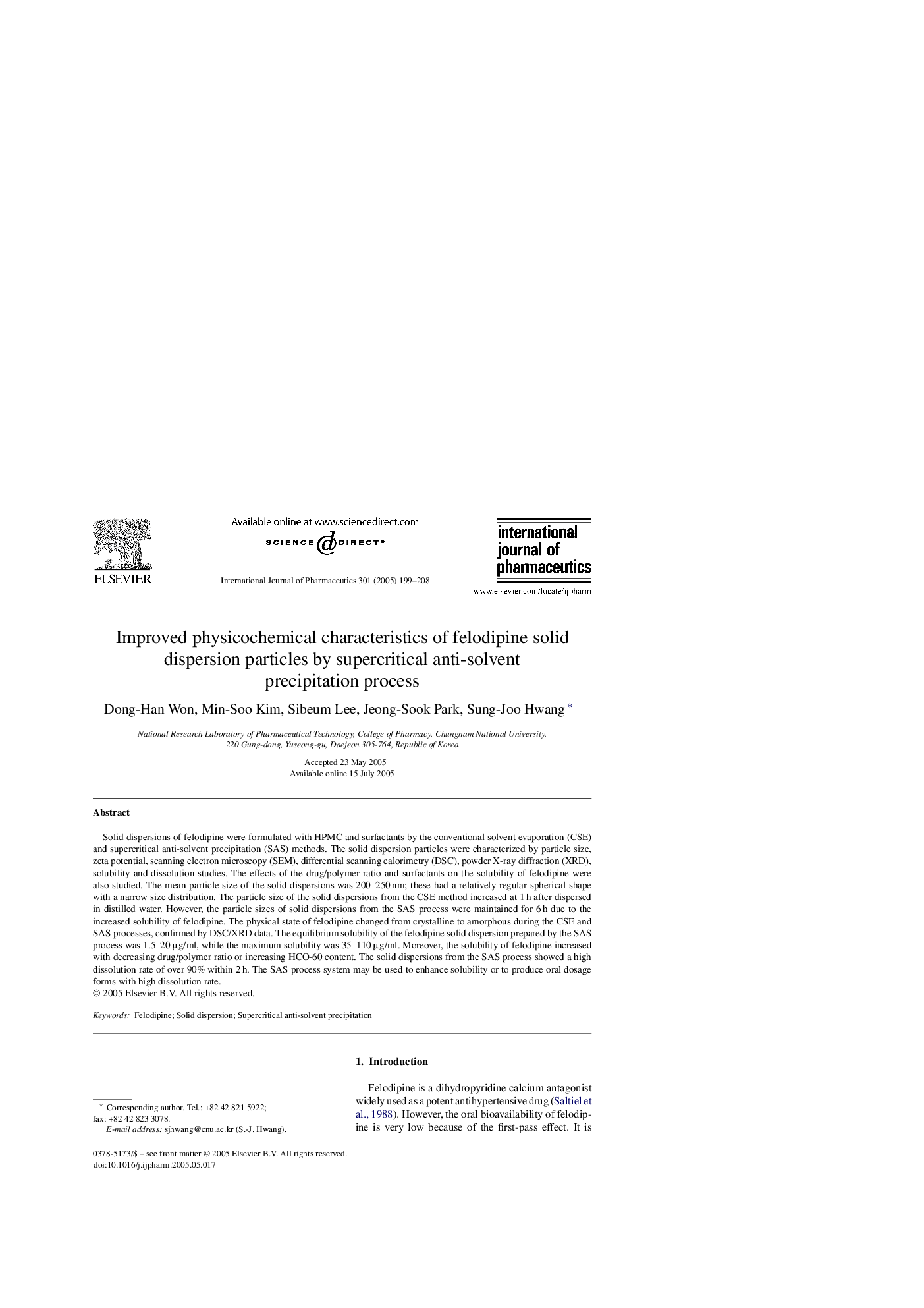| Article ID | Journal | Published Year | Pages | File Type |
|---|---|---|---|---|
| 9918658 | International Journal of Pharmaceutics | 2005 | 10 Pages |
Abstract
Solid dispersions of felodipine were formulated with HPMC and surfactants by the conventional solvent evaporation (CSE) and supercritical anti-solvent precipitation (SAS) methods. The solid dispersion particles were characterized by particle size, zeta potential, scanning electron microscopy (SEM), differential scanning calorimetry (DSC), powder X-ray diffraction (XRD), solubility and dissolution studies. The effects of the drug/polymer ratio and surfactants on the solubility of felodipine were also studied. The mean particle size of the solid dispersions was 200-250 nm; these had a relatively regular spherical shape with a narrow size distribution. The particle size of the solid dispersions from the CSE method increased at 1 h after dispersed in distilled water. However, the particle sizes of solid dispersions from the SAS process were maintained for 6 h due to the increased solubility of felodipine. The physical state of felodipine changed from crystalline to amorphous during the CSE and SAS processes, confirmed by DSC/XRD data. The equilibrium solubility of the felodipine solid dispersion prepared by the SAS process was 1.5-20 μg/ml, while the maximum solubility was 35-110 μg/ml. Moreover, the solubility of felodipine increased with decreasing drug/polymer ratio or increasing HCO-60 content. The solid dispersions from the SAS process showed a high dissolution rate of over 90% within 2 h. The SAS process system may be used to enhance solubility or to produce oral dosage forms with high dissolution rate.
Related Topics
Health Sciences
Pharmacology, Toxicology and Pharmaceutical Science
Pharmaceutical Science
Authors
Dong-Han Won, Min-Soo Kim, Sibeum Lee, Jeong-Sook Park, Sung-Joo Hwang,
